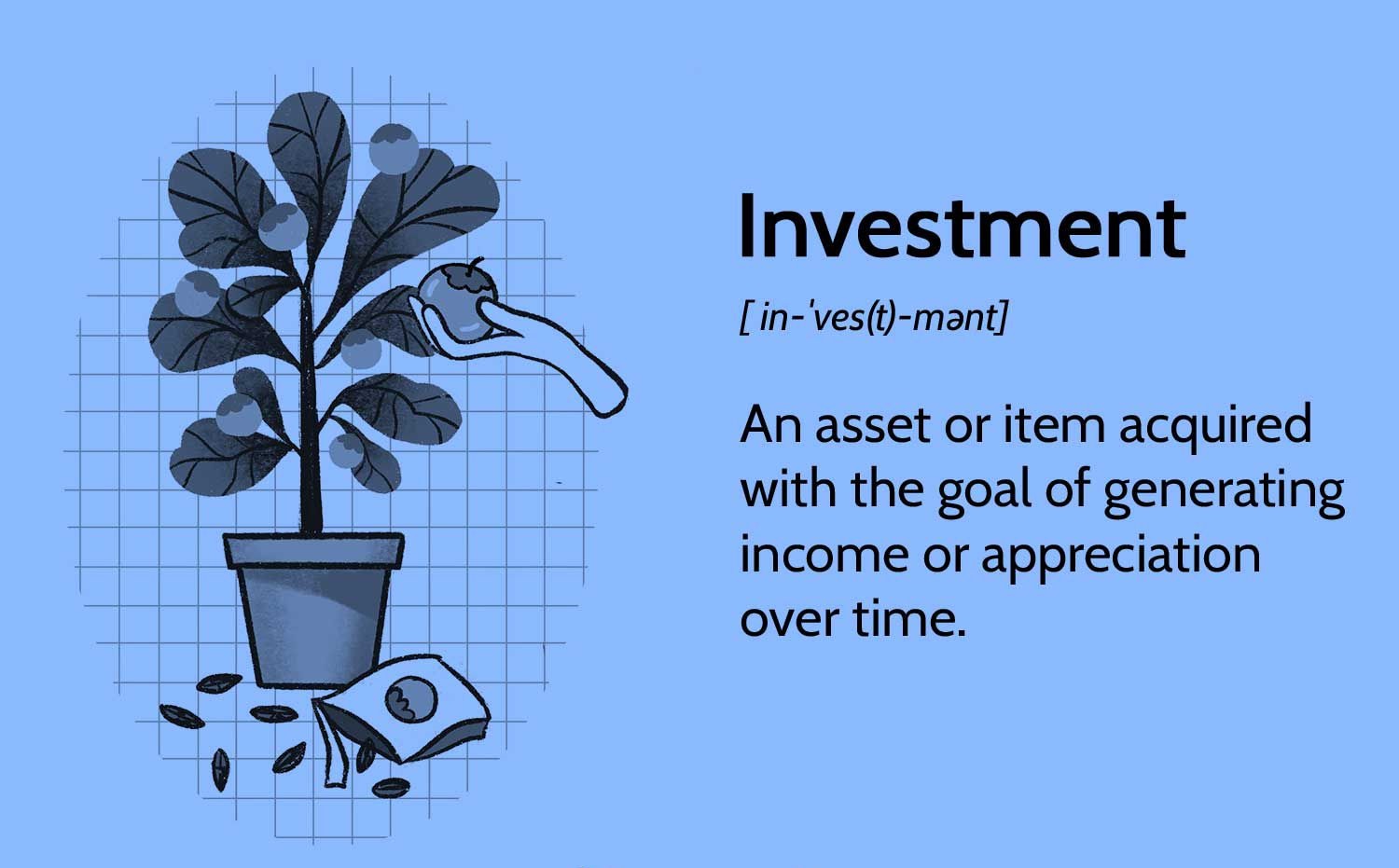Introduction
Investing is an essential component of building wealth and securing our financial futures. Whether you’re saving for retirement, buying a house, or funding your children’s education, making wise investment decisions is crucial. However, the world of investments can be complex and overwhelming for many people.
In this article, we will explore the fundamental principles of investing and provide practical tips to help you navigate the investment landscape. From understanding risk and return to diversifying your portfolio, we’ll cover key strategies that can help you make informed investment decisions.
It’s important to note that investing is a long-term commitment, and success often requires patience, discipline, and a deep understanding of market dynamics. While investments carry inherent risks, with the right knowledge and approach, you can maximize your chances of achieving your financial goals.
We will also discuss the importance of setting clear financial goals and choosing the right investment account to suit your needs. Additionally, we will highlight the significance of monitoring and evaluating your investments, as well as managing your emotions throughout the investment journey.
Whether you are a seasoned investor or just starting your investment journey, this article will provide valuable insights and practical advice to help you navigate the world of investments. By following these strategies and staying informed, you can set yourself up for financial success and achieve the future you desire.
So let’s dive in and learn how to make informed investment decisions that can help you build wealth and achieve your financial goals.
Researching Investment Options
Before diving into the world of investments, it is crucial to conduct thorough research to identify the right investment options for your financial goals. Here are some essential steps to consider:
1. Assess Your Risk Tolerance: Understanding your risk tolerance is essential as it helps determine the type of investments that align with your comfort level. Some individuals may be more comfortable with conservative investments, while others may be willing to take on higher risks for potentially higher returns.
2. Define Your Investment Objectives: Clearly define your financial goals, whether they are short-term (e.g., buying a car) or long-term (e.g., retirement planning). By doing so, you can align your investments with specific objectives, ensuring your investment strategy is tailored to your needs.
3. Explore Different Asset Classes: Familiarize yourself with various asset classes such as stocks, bonds, real estate, mutual funds, and exchange-traded funds (ETFs). Each asset class carries its own set of risks and potential returns. Diversifying your portfolio across different asset classes can help mitigate risks and maximize returns.
4. Analyze Market Trends: Stay informed about market trends and economic indicators. Analyze historical data, financial statements, and economic forecasts to identify potential investment opportunities. Consider reading financial news, following expert analysis, and utilizing reliable investment research platforms to make informed decisions.
5. Seek Professional Guidance: If you are unsure about the complexities of investing or lack the time to conduct in-depth research, consider consulting with a financial advisor. They can provide personalized advice based on your financial situation and help you build a diversified portfolio aligned with your goals.
Remember, investing is not a one-size-fits-all approach. It is essential to conduct proper research, evaluate different investment options based on your risk tolerance and financial objectives, and seek professional guidance when needed. By doing so, you can make well-informed investment decisions that align with your financial goals and increase your chances of achieving long-term success.
Setting Financial Goals
Setting clear and measurable financial goals is a crucial step in building a successful investment strategy. By defining your goals, you can create a roadmap that directs your investment decisions. Here are some key considerations when setting financial goals:
1. Identify Short-term and Long-term Objectives: Start by distinguishing between short-term and long-term financial goals. Short-term goals may include saving for a down payment on a house or paying off high-interest debt, while long-term goals could consist of retirement planning or funding your children’s education. By categorizing your goals, you can allocate your investments accordingly.
2. Make Goals Specific and Measurable: Avoid vague goals and instead make them specific and measurable. For example, instead of saying “I want to save for retirement,” determine the exact amount you aim to save. This clarity helps you stay focused and motivated, as you have a concrete target to work towards.
3. Consider Time Horizon: Time horizon plays a significant role in shaping your investment strategy. Goals with longer time horizons, such as retirement planning, can accommodate more risk in your investment portfolio, as you have a greater ability to ride out market fluctuations. On the other hand, short-term goals require a more conservative approach to protect your principal investment.
4. Factor in Inflation and Other Factors: Take into account the impact of inflation on your financial goals. Inflation erodes the purchasing power of money over time, so adjust your savings and investment targets to account for this. Additionally, consider external factors such as changes in interest rates, economic conditions, and personal circumstances that may influence your goals.
5. Revisit and Revise Goals Regularly: Financial goals can evolve over time, so it’s important to review and update them periodically. Life events, market conditions, and personal circumstances can all impact your goals. By reassessing and adjusting your objectives, you can ensure your investment strategy remains aligned with your changing needs.
Remember, setting financial goals is an ongoing process. As you achieve one goal, celebrate your success and set new objectives to continue growing your wealth. By establishing clear and measurable goals, you can create a roadmap that guides your investment decisions, enabling you to stay focused and motivated on your journey towards financial success.
Understanding Risk and Return
When it comes to investing, understanding the relationship between risk and return is essential. Risk refers to the potential for loss or volatility in investment value, while return represents the gains an investment generates over a given period. Here are key concepts to grasp:
1. Risk versus Reward: Generally, investments with higher potential returns tend to carry higher levels of risk. This is because higher-risk investments are more susceptible to market fluctuations and economic uncertainties. Conversely, lower-risk investments may offer more stability but typically yield lower returns. Finding the right balance between risk and reward depends on your risk tolerance and investment goals.
2. Diversification: Diversification is a strategy that involves spreading your investments across various asset classes, sectors, and geographic regions. By diversifying your portfolio, you reduce the impact of any single investment’s poor performance on your overall portfolio. This can help mitigate risk and potentially enhance returns.
3. Risk Tolerance: Understanding your risk tolerance is crucial in developing an investment strategy that aligns with your comfort level. Assess your financial situation, time horizon, and your ability to handle market volatility. Conservative investors may opt for lower-risk investments, while more aggressive investors may be willing to take on higher levels of risk for potentially higher returns.
4. Volatility: Volatility refers to the frequency and extent of price fluctuations in an investment. While volatility can be unnerving, it also presents opportunities for potential gains. Investors with longer time horizons can often tolerate short-term volatility in exchange for potentially higher long-term returns.
5. Assessing Risk: Before investing, carefully assess the risk associated with an investment. Consider factors such as the historical performance of the investment, the underlying assets or securities, market conditions, and the stability of the issuer or company. Conducting thorough research and seeking professional advice can provide insights into the risk level of potential investments.
Understanding the relationship between risk and return helps you make informed investment decisions that align with your financial goals and risk tolerance. By diversifying your portfolio, assessing risk factors, and staying informed about market conditions, you can manage risk effectively while maximizing your chances of achieving favorable investment returns.
Diversifying Your Portfolio
Diversification is a crucial strategy in investment management that involves spreading your investments across a variety of asset classes, sectors, and geographic regions. By diversifying your portfolio, you can potentially reduce risk and enhance returns. Here are key points to consider when diversifying your investments:
1. Spreading Investments: Instead of putting all your eggs in one basket, allocate your investments across different asset classes such as stocks, bonds, real estate, and commodities. Each asset class has its own risk-return characteristics, and diversifying across them helps minimize the impact of any one investment’s poor performance on your overall portfolio.
2. Sector Allocation: Within asset classes, diversify your portfolio by investing in a wide range of industries or sectors. Industries can perform differently based on market conditions, economic cycles, and regulatory changes. By spreading your investments across various sectors, you reduce the risk of being too heavily exposed to a particular industry’s performance.
3. Geographic Diversification: Consider investing in different countries and regions. Economic conditions, political events, and currency fluctuations can have a significant impact on investment returns. By spreading your investments geographically, you reduce the risk associated with being overly concentrated in a single market.
4. Risk-Return Profile: Diversification should be based not only on asset classes, sectors, and geography but also on the risk-return profile of your investments. Evaluate the risk associated with each investment and ensure the overall risk of your portfolio aligns with your risk tolerance. Striking the right balance between high-risk and low-risk investments can help you achieve your financial goals while managing risk effectively.
5. Rebalancing: Regularly review and rebalance your portfolio to maintain the desired diversification. Over time, the performance of different investments can vary, leading to an imbalance in your portfolio. Rebalancing involves adjusting your investments to restore the intended asset allocation and risk exposure. This ensures that you stay on track with your diversification strategy.
Remember, diversification does not guarantee against losses, but it can potentially minimize the impact of market downturns on your portfolio. By spreading your investments across different asset classes, industries, and geographic regions, you create a more robust portfolio that can weather various market conditions. Regularly reviewing and rebalancing your portfolio keeps it aligned with your investment goals and risk tolerance. By diversifying your portfolio, you increase the likelihood of achieving long-term investment success.
Choosing the Right Investment Account
When it comes to investing, choosing the right investment account is crucial. The type of account you select can have important implications for taxes, fees, accessibility, and investment options. Here are some key considerations when choosing an investment account:
1. Individual Retirement Accounts (IRA): IRAs offer tax advantages for retirement savings. Traditional IRAs allow you to contribute pre-tax income, potentially reducing your taxable income in the year of contribution. Roth IRAs, on the other hand, are funded with after-tax income, allowing for tax-free withdrawals in retirement. Consider your current tax situation and retirement goals when determining which type of IRA is most suitable for you.
2. Employer-Sponsored Retirement Plans: Many employers offer retirement plans, such as 401(k)s or 403(b)s, which allow employees to contribute a portion of their salary towards retirement savings. Employers often match a percentage of employee contributions, providing an additional incentive. Take advantage of these plans, as they offer a convenient way to save for retirement with potential tax benefits.
3. Taxable Brokerage Accounts: Taxable brokerage accounts are non-retirement accounts that offer flexibility in terms of contributions and withdrawals. These accounts do not offer tax advantages like retirement accounts, but they provide more accessibility to funds and a wider range of investment options. They can be beneficial for short-term investment goals or as a complement to retirement accounts.
4. Education Savings Accounts: If you are saving for education expenses, consider education savings accounts such as 529 plans or Coverdell Education Savings Accounts. These accounts offer tax advantages for education-related expenses, including college tuition, books, and supplies. Evaluate the specific features and restrictions of each account to determine which aligns best with your education savings goals.
5. Consider Fees and Accessibility: When choosing an investment account, be mindful of any associated fees, such as maintenance fees, transaction fees, or management fees. High fees can significantly impact your investment returns over time. Additionally, consider the accessibility of the account—how easy it is to access and manage your investments. Online brokerage accounts or investment platforms may offer more convenience and lower fees compared to traditional brick-and-mortar financial institutions.
Evaluate your financial goals, tax situation, and investment preferences when selecting an investment account. Speak with a financial advisor or research different account options to find the one that best aligns with your needs. Remember to regularly review your investment accounts and make adjustments as your goals and circumstances evolve. By choosing the right investment account, you can maximize your investment potential and ensure your investment strategy is tailored to your specific needs.
Implementing Your Investment Strategy
Once you have established your financial goals and selected the right investment accounts, it is time to implement your investment strategy. Putting your plan into action involves several key steps that will help you stay on track towards achieving your objectives. Here’s how to effectively implement your investment strategy:
1. Asset Allocation: Determine the allocation of your investments across different asset classes, such as stocks, bonds, and cash. This decision should align with your risk tolerance and financial goals. Consider diversifying your portfolio based on your desired asset allocation to spread risk and optimize potential returns.
2. Selecting Investments: Choose specific investments that fit within your asset allocation strategy. Research individual stocks, mutual funds, ETFs, or bonds that align with your investment objectives. Evaluate factors such as historical performance, fees, management team, and investment philosophy before making your investment decisions. Seek professional advice if needed.
3. Dollar-Cost Averaging: Consider implementing a dollar-cost averaging strategy, particularly when investing in volatile markets. This approach involves investing a fixed amount of money at regular intervals, regardless of market conditions. By purchasing more shares when prices are low and fewer shares when prices are high, you can mitigate the impact of market fluctuations on your overall investment performance.
4. Rebalancing: Regularly review and rebalance your investment portfolio to maintain your desired asset allocation. Over time, market movements can cause certain asset classes to become over or underrepresented in your portfolio. Rebalancing involves adjusting your investments to realign with your original asset allocation targets. This practice helps ensure that your portfolio remains in line with your risk tolerance and investment objectives.
5. Stay Informed: Keep yourself updated on market trends, economic indicators, and investment news. Monitor the performance and news surrounding your investments. Staying informed allows you to make informed decisions and take timely actions to adjust your portfolio when necessary.
6. Automation and Regular Contributions: Consider automating your investment contributions to ensure consistency and discipline. Set up automatic transfers from your bank account to your investment accounts on a regular basis. Regular contributions, combined with automation, encourage consistent investing and help you take advantage of long-term market trends.
Implementing your investment strategy requires discipline, patience, and ongoing monitoring. Regularly review and assess your investment performance and make adjustments as needed to stay aligned with your goals. Remember, investing is a long-term journey, and it is important to stay focused on your strategy even during market fluctuations. By effectively implementing your investment strategy, you can increase your chances of achieving your financial objectives.
Monitoring and Evaluating Your Investments
Monitoring and evaluating your investments is an essential part of successful investing. Regularly reviewing your investment portfolio allows you to track performance, identify potential issues, and make informed decisions. Here are key steps to effectively monitor and evaluate your investments:
1. Track Performance: Regularly monitor the performance of your investments. Keep track of key metrics such as annual returns, growth rates, and dividend yields. Compare your investments’ performance against relevant benchmarks to assess their relative performance.
2. Review Investment Objectives: Continually assess whether your investments are aligning with your financial goals. Review your investment objectives and determine if any adjustments are necessary. Changes in personal circumstances or market conditions may require you to realign your investment strategy.
3. Stay Informed: Keep yourself informed about the market and economic trends that can impact your investments. Stay up to date with financial news, economic indicators, and company news relevant to your investments. This information helps you make informed decisions about your portfolio.
4. Rebalance When Necessary: Regularly review your portfolio’s asset allocation and rebalance if necessary. Rebalancing involves adjusting the proportions of your investments to realign with your target asset allocation. This helps ensure that your portfolio remains aligned with your risk tolerance and investment goals.
5. Evaluate Fund Managers: If you have invested in mutual funds or other managed accounts, evaluate the performance and track record of the fund managers. Consider the fund manager’s investment strategy, experience, and consistency in delivering returns. Continually assess whether they are meeting your expectations.
6. Tax Considerations: Stay aware of any tax implications related to your investments. Understand the tax consequences of capital gains, dividends, and interest income. Consult with a tax advisor to optimize tax efficiency within your investment strategy.
7. Recognize Emotional Biases: Be aware of emotional biases that may influence your investment decisions. Avoid making impulsive decisions based on short-term market fluctuations. Stay disciplined and focused on your long-term investment strategy.
8. Seek Professional Guidance: Consider consulting with a financial advisor or investment professional. They can provide valuable insights and guidance based on their expertise and experience. A professional can help you navigate complex investment issues and offer personalized advice based on your financial goals.
Monitoring and evaluating your investments is an ongoing process. Regularly review and assess your portfolio’s performance and make adjustments as needed. By staying informed, rebalancing when necessary, recognizing emotional biases, and seeking professional guidance when appropriate, you can effectively monitor and evaluate your investments to optimize your financial success.
Managing Your Emotions
Emotions can have a significant impact on investment decisions. Fear, greed, and panic can often push investors to make irrational choices, leading to poor investment outcomes. Managing your emotions is crucial for successful long-term investing. Here are key strategies to help you manage your emotions:
1. Stay Focused on Your Goals: Remind yourself of your financial goals and the long-term nature of investing. Keeping your goals in mind can help you stay focused and avoid making impulsive decisions based on short-term market fluctuations.
2. Develop a Solid Investment Plan: Establishing a well-thought-out investment plan can provide you with a framework to guide your decisions. Having a plan in place helps you avoid making emotional, spur-of-the-moment investment choices.
3. Separate Emotion from Investment Decisions: Try to make rational decisions based on logic and research rather than emotions. Emotion-driven decisions often lead to regrets. Take a step back, analyze the situation objectively, and make informed decisions based on facts and analysis.
4. Avoid Constant Monitoring: Although it is important to stay informed about your investments, constantly checking market movements can fuel emotional reactions. Consider limiting the frequency of checking your investment portfolio to avoid unnecessary stress and knee-jerk reactions.
5. Stick to your Investment Strategy: Trust the strategy you have put in place and stick to it. Avoid making sudden changes due to fear or excitement. Market volatility is inevitable, and reacting emotionally to short-term fluctuations can harm your long-term investment performance.
6. Establish a Support System: Surround yourself with supportive individuals who can provide guidance and help you stay focused during turbulent times. Trusted friends, family members, or financial advisors can offer valuable perspectives and help keep your emotions in check.
7. Learn from Mistakes: Successful investors understand that losses and setbacks are part of the game. Use past experiences to learn and improve your investment approach. Reflect on your mistakes, consider how emotions may have influenced those decisions, and make adjustments for future investments.
8. Take a Long-Term Outlook: Remind yourself that investing is a long-term endeavor. Market conditions can fluctuate, but historically, markets have shown a tendency to recover and generate positive returns over the long run. Maintaining a long-term outlook can help alleviate short-term anxiety.
Managing your emotions plays a significant role in maintaining a disciplined and successful investment strategy. By staying focused on your goals, separating emotions from decisions, and sticking to your investment plan, you can make rational choices that align with your long-term objectives. Remember, investing is a marathon, not a sprint, and managing your emotions is crucial for enduring success in the financial markets.
Conclusion
Investing wisely and effectively is a journey that requires knowledge, strategic planning, and emotional discipline. By understanding the fundamental principles of investing, researching investment options, setting clear financial goals, and managing risk and return, you can lay a strong foundation for your investment strategy.
Diversifying your portfolio, choosing the right investment account, implementing your strategy, and monitoring and evaluating your investments are vital steps in building a successful investment portfolio. By following these steps, you can increase your chances of achieving your financial goals and securing a stable financial future.
Additionally, managing your emotions throughout the investment process is crucial. Emotions can often cloud judgment and lead to poor investment decisions. By staying focused on your goals, making rational decisions, and controlling your urges driven by fear or greed, you can avoid impulsive actions and stay on track.
Remember that investing is a long-term endeavor. It requires patience, discipline, and a commitment to consistently monitor and adjust your portfolio as needed. Stay informed, seek professional guidance when necessary, and continue learning about investment strategies and market trends.
In conclusion, investing is a powerful tool for building wealth and securing your financial future. By following the principles outlined in this article, you can navigate the complexities of the investment landscape and make informed decisions that align with your goals. Stay focused, stay disciplined, and stay committed to your investment strategy. With time and diligence, you can achieve long-term success in the world of investing.

























